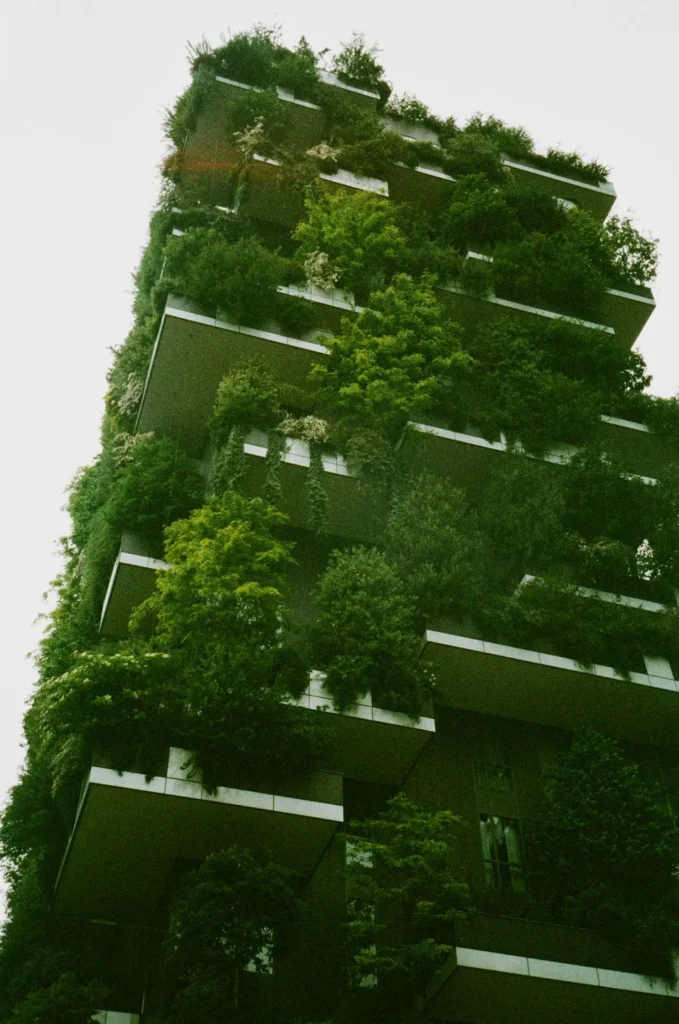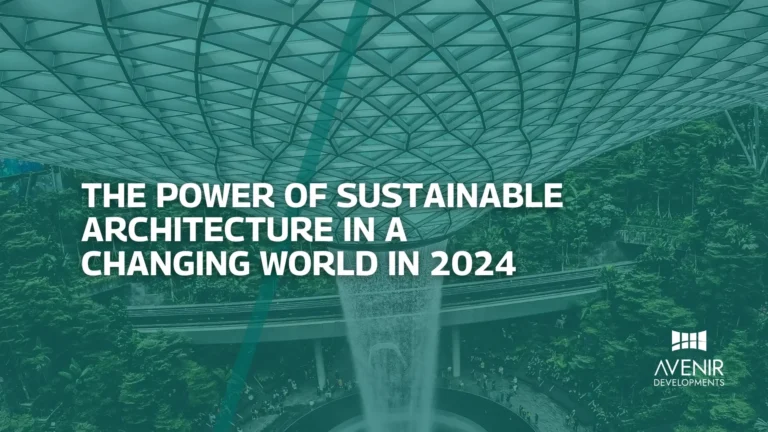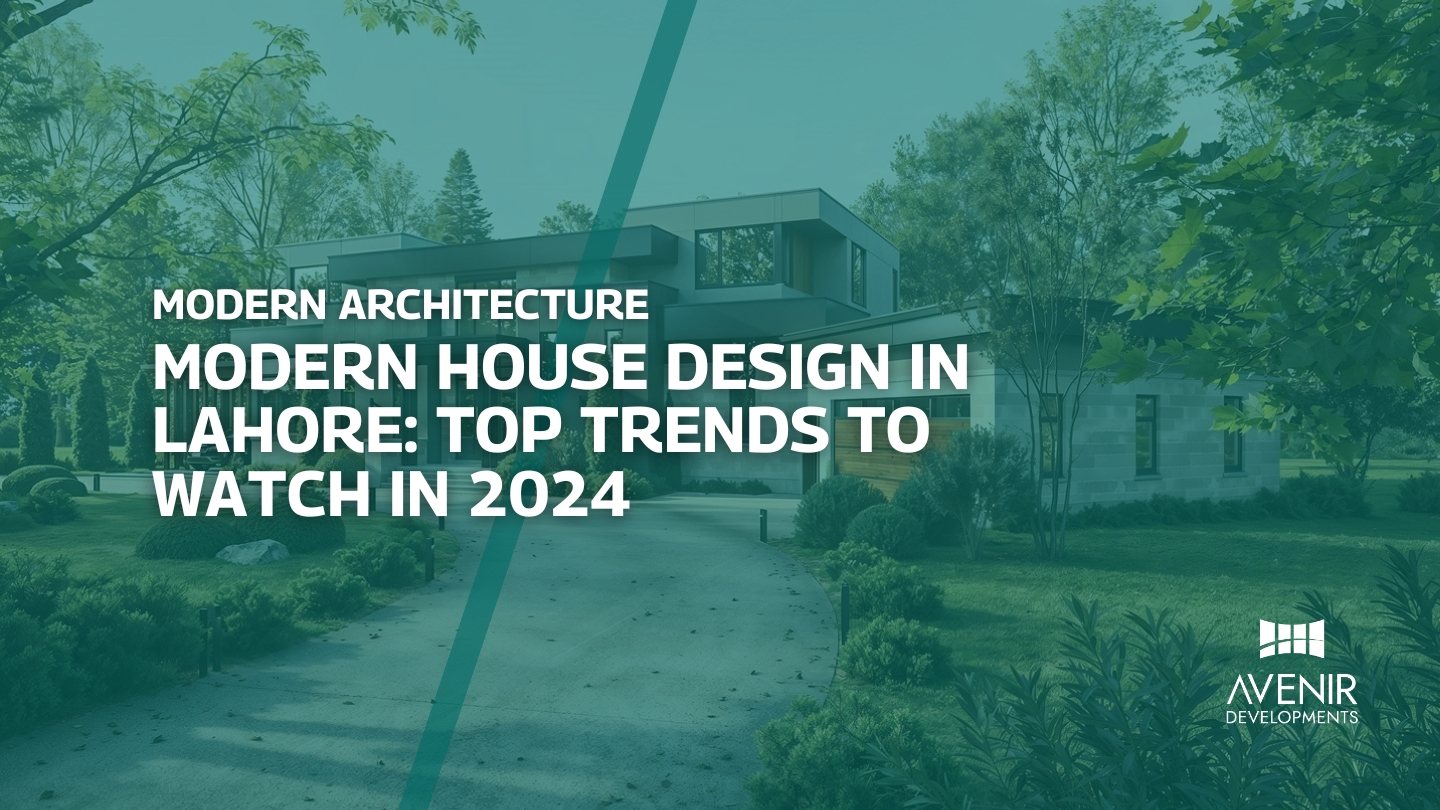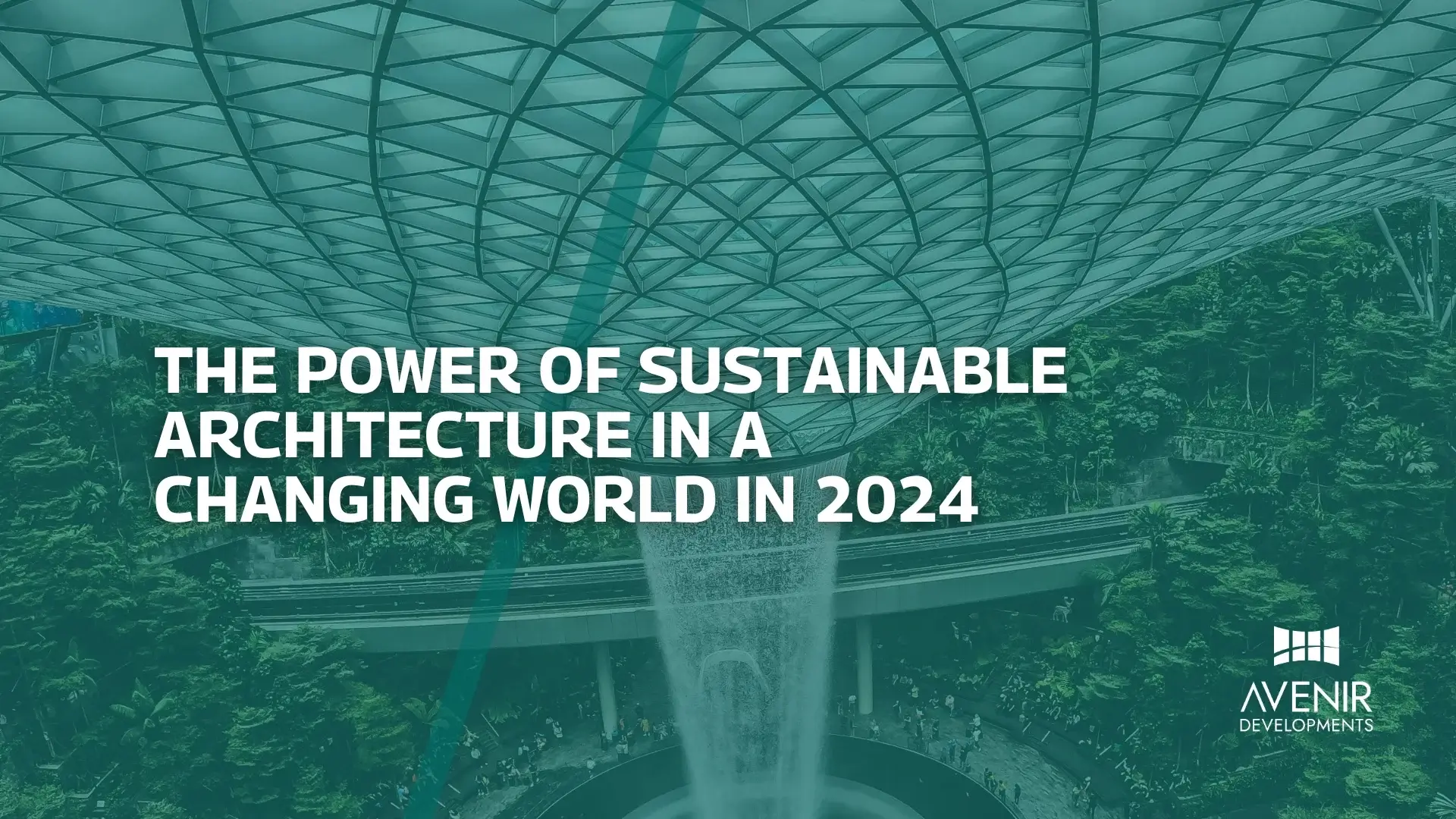The concept of sustainable architecture has gained significant momentum in recent years, as the world grapples with the pressing issue of climate change. As an experienced architect and interior designer, I’ve witnessed firsthand the transformative power of sustainable design principles. By integrating eco-friendly practices into our built environment, we can mitigate environmental impact, conserve resources, and create healthier, more resilient communities.
Living in a bustling city like Lahore, it’s easy to take the buildings around you for granted. Brick and mortar become the backdrop to our daily lives, but have you ever stopped to think about the impact these structures have on our environment? As a sustainability blogger for a few years now, I’ve come to realize that the way we design and build our spaces has a profound effect on the planet. This is where the concept of sustainable architecture comes in, offering a beacon of hope in our ever-changing world.
Sustainable architecture is not a new concept. Throughout history, civilizations have incorporated sustainable principles into their building practices. From the ancient Romans’ advanced water systems to the traditional Chinese architecture’s harmonious integration with nature, these early examples demonstrate the timeless value of sustainable design.
In recent decades, however, sustainable architecture has evolved into a more formalized and scientific discipline. With growing concerns about climate change, resource depletion, and urban sprawl, architects and designers are increasingly turning to sustainable solutions.
Key milestones in the development of sustainable architecture include:
- The 1970s Energy Crisis: This period marked a turning point, as energy efficiency became a major concern.
- The 1990s and the Rise of Green Building Standards: The development of rating systems like LEED and BREEAM provided a framework for sustainable building practices.
- The 21st Century and Climate Change: The increasing urgency of climate change has accelerated the adoption of sustainable architecture.
By embracing sustainable principles, we can create buildings that are not only energy-efficient but also aesthetically pleasing, functional, and socially responsible.

Understanding Sustainable Architecture: A Foundation of Green Design
So, what exactly is sustainable architecture? In a nutshell, it’s a design philosophy that prioritizes minimizing a building’s environmental impact while maximizing its positive social and ecological benefits. It’s about creating structures that are energy-efficient, resource-conscious, and ultimately, contribute to a healthier planet for future generations.
The concept isn’t entirely new. Traditional architecture, particularly in regions with limited resources, has always incorporated sustainable elements. Think about the mud houses in cooler climates that naturally regulate temperature, or the strategically placed windcatchers in the Middle East that promote air circulation. However, the modern approach to sustainable architecture takes these principles even further, leveraging advancements in technology and materials.
The significance of sustainable architecture is undeniable. Buildings are responsible for a significant chunk of global energy consumption and carbon emissions. According to a World Green Building Council report, buildings account for nearly 40% of global energy consumption and 36% of final energy use in buildings is for space heating and cooling. Sustainable architecture offers a solution to this by promoting energy-efficient practices and integrating renewable resources.
Emerging Trends and Innovations: Shaping the Future of Sustainable Design
The field of sustainable architecture is constantly evolving, with new trends and innovations emerging all the time. Here in Pakistan, the government is taking significant steps to promote eco-friendly building practices. The recently launched National Green Building Standard sets a benchmark for energy and water efficiency in buildings, paving the way for a more sustainable construction industry.
Globally, some of the hottest trends in sustainable architecture include:
- Biophilic Design: This approach brings nature indoors, incorporating elements like natural light, greenery, and natural materials to improve occupant well-being and reduce stress. Studies have shown that biophilic design can even lead to increased productivity and creativity.
- Adaptive Reuse: Instead of demolishing existing structures, architects are increasingly looking for ways to repurpose them. This not only reduces construction waste but also breathes new life into older buildings.
- Smart Technologies: Building automation systems and Internet of Things (IoT) integration are revolutionizing how we manage energy consumption in buildings. These technologies allow for real-time monitoring and adjustments, leading to significant reductions in energy use.
- Circular Economy Principles: Sustainable architects are focusing on using recycled and recyclable materials in construction. This not only reduces reliance on virgin resources but also minimizes landfill waste.
These are just a few examples, and the possibilities are constantly expanding. As a blogger who closely follows these advancements, it’s exciting to see how sustainable architecture is not just about environmental responsibility, but also about creating healthier, more comfortable spaces for people to live and work in.
The Latest Trends in Sustainable Architecture
In 2024, sustainable architecture is experiencing rapid evolution, driven by technological advancements, changing regulations, and growing public awareness. Several key trends are shaping the industry:
1. Net-Zero Energy Buildings
Net-zero energy buildings are designed to produce as much energy as they consume over the course of a year. This is achieved through a combination of energy-efficient design, renewable energy technologies, and advanced building systems.
2. Biophilic Design
Biophilic design seeks to connect people with nature, incorporating natural elements like plants, water features, and natural light into building interiors. Studies have shown that biophilic design can improve cognitive function, reduce stress, and enhance overall well-being.
3. Sustainable Materials
The use of sustainable materials, such as recycled steel, reclaimed wood, and bamboo, is becoming increasingly popular. These materials have a lower environmental impact than traditional building materials and can contribute to a building’s overall sustainability.
4. Smart Building Technologies
Smart building technologies, including automated lighting systems, intelligent HVAC controls, and real-time energy monitoring, are enabling buildings to operate more efficiently. These technologies can optimize energy consumption, reduce waste, and improve occupant comfort.
5. Sustainable Urban Development
Sustainable urban development focuses on creating cities that are environmentally friendly, economically prosperous, and socially equitable. This involves strategies like mixed-use development, green infrastructure, and public transportation.
Pakistan’s Role in Sustainable Architecture
Pakistan, with its diverse climate and growing population, has a significant opportunity to adopt sustainable architecture. The government has taken steps to promote green building practices, such as the development of building codes and incentives for energy-efficient buildings.
However, there is still much to be done. To accelerate the adoption of sustainable architecture in Pakistan, the government, private sector, and civil society should collaborate to:
- Strengthen Building Codes: Update building codes to incorporate stricter energy efficiency and sustainability standards.
- Promote Renewable Energy: Encourage the use of renewable energy sources, such as solar and wind power, in buildings.
- Invest in Green Infrastructure: Implement green infrastructure projects, such as green roofs and urban forests, to improve air quality and reduce stormwater runoff.
- Raise Awareness: Educate the public about the benefits of sustainable architecture and the role they can play in creating a more sustainable future.
By embracing sustainable architecture, Pakistan can not only mitigate climate change but also improve the quality of life for its citizens.
Demystifying Sustainable Architecture: Answering Your Questions
There are often misconceptions surrounding sustainable architecture. Here are some of the most common questions I get as a blogger, along with clear and concise answers:
Is sustainable architecture expensive?
While upfront costs for some sustainable features might be higher, the long-term savings on energy bills and maintenance can outweigh those initial costs. Additionally, with increasing government incentives and technological advancements, sustainable building practices are becoming more cost-effective.
Does sustainable architecture compromise on aesthetics?
Absolutely not! Sustainable design principles can be seamlessly integrated into beautiful, functional buildings. In fact, many architects are finding innovative ways to use sustainable materials and technologies to create stunning and award-winning structures.
How can I incorporate sustainable practices into my own home?
There are many ways! Start by focusing on simple things like using LED lights, installing energy-efficient appliances, and sealing air leaks. You can also consider rainwater harvesting for watering your plants or installing a solar panel system to generate your own electricity.
Putting Green Design into Action: Tips from a Blogger
As someone who’s passionate about sustainable living, I encourage everyone to consider incorporating sustainable principles into their lives, especially when it comes to their living spaces. Here are a few tips to get you started:
- Do your research: Before embarking on any renovations or construction projects, educate yourself on sustainable building practices. There are numerous online resources and organizations dedicated to sustainable architecture, such as the World Green Building Council and the Leadership in Energy and Environmental Design (LEED) program.
- Seek professional guidance: Consider consulting with an architect or builder who specializes in sustainable design. They can help you assess your needs, explore sustainable options that fit your budget and climate, and ensure your project complies with relevant regulations.
- Think lifecycle costs: While the initial cost of some sustainable features might be higher, consider the long-term savings. Energy-efficient appliances, for example, may have a higher upfront cost, but they will save you money on your electricity bills for years to come.
- Embrace local and recycled materials: Look for ways to incorporate locally sourced and recycled materials into your project. This not only reduces your environmental impact but also supports your local economy.
- Start small, but start somewhere: Don’t feel overwhelmed by the idea of a complete sustainable makeover. Even small changes, like switching to LED light bulbs or installing a low-flow showerhead, can make a big difference.
Expert Tips for Embracing Sustainable Architecture
As an experienced architect and interior designer, I have some practical tips for those looking to incorporate sustainable principles into their projects:
- Prioritize Energy Efficiency:
- Optimize Building Orientation: Design buildings to maximize natural light and minimize heat gain.
- Implement High-Performance Building Envelopes: Use advanced insulation materials and airtight construction techniques to reduce energy loss.
- Invest in Energy-Efficient HVAC Systems: Choose systems with high SEER ratings and variable speed compressors.
- Harness Renewable Energy:
- Install Solar Panels: Generate clean energy to power your building’s electrical needs.
- Explore Wind Power: In suitable locations, wind turbines can provide a sustainable energy source.
- Consider Geothermal Energy: Utilize the Earth’s constant temperature to heat and cool your building.
- Conserve Water:
- Install Water-Efficient Fixtures: Opt for low-flow toilets, showerheads, and faucets.
- Implement Rainwater Harvesting: Collect and store rainwater for irrigation and other non-potable uses.
- Utilize Graywater Systems: Recycle wastewater from sinks and showers for non-potable applications.
- Select Sustainable Materials:
- Choose Locally Sourced Materials: Reduce transportation emissions and support local economies.
- Prioritize Recycled and Renewable Materials: Use materials like recycled steel, reclaimed wood, and bamboo.
- Consider Material Embodied Energy: Evaluate the energy required to produce and transport materials.
- Create Healthy Indoor Environments:
- Improve Indoor Air Quality: Utilize low-VOC paints and finishes, and implement proper ventilation systems.
- Maximize Natural Light: Design spaces to take advantage of daylighting, reducing the need for artificial lighting.
- Incorporate Biophilic Design: Integrate natural elements like plants, water features, and natural materials to enhance well-being.
By following these tips and working with experienced professionals, you can create sustainable buildings that are both environmentally friendly and aesthetically pleasing.
Building a Sustainable Future: The Power is in Your Hands
Sustainable architecture isn’t just a trend; it’s a necessity for our planet’s future. By embracing these principles, we can create healthier, more resource-efficient buildings that contribute to a more sustainable future for all. As someone who writes about sustainability every day, I believe that everyone has a role to play.
Sustainable architecture is not just a trend; it’s a necessity. By embracing sustainable principles, we can create a more resilient, equitable, and environmentally friendly future.
As architects, designers, and builders, we have a responsibility to design and construct buildings that minimize their impact on the planet. By working together, we can inspire innovation, drive change, and shape a sustainable future for generations to come.
Ready to embark on your sustainable building journey? Contact Avenir Developments today to discuss your project and learn how we can help you create a more sustainable future.
If you’re interested in incorporating sustainable design into your next building project, Avenir Developments is here to help! Our team of architects in Lahore and Islamabad, interior designers, and construction management professionals are passionate about creating sustainable and beautiful spaces. Contact Avenir Developments today on WhatsApp or Call +923001101103 for a consultation and let’s work together to build a greener future.






